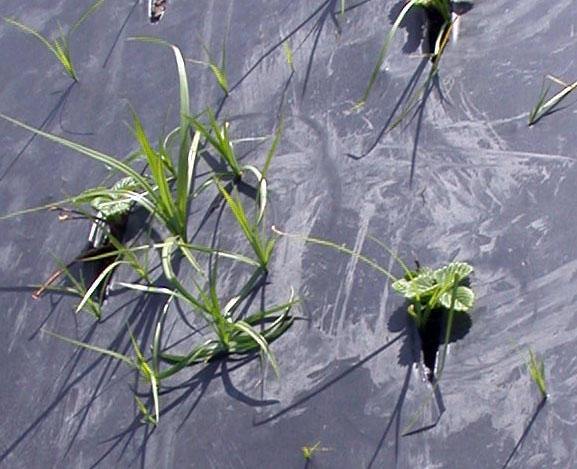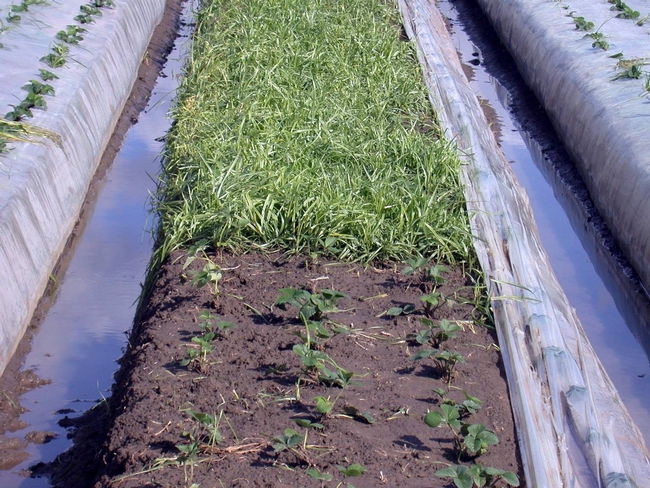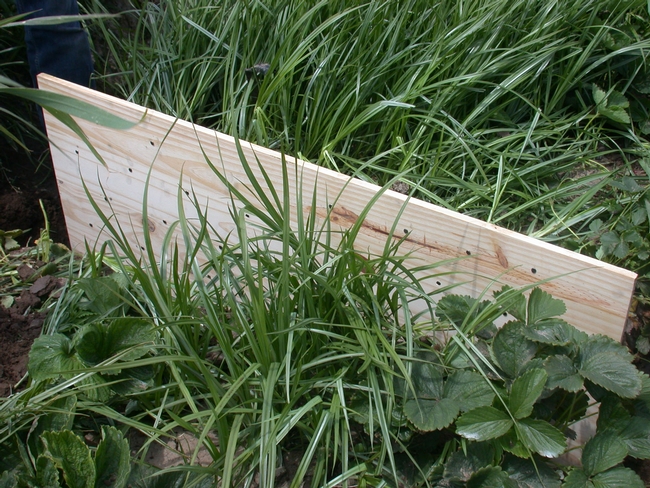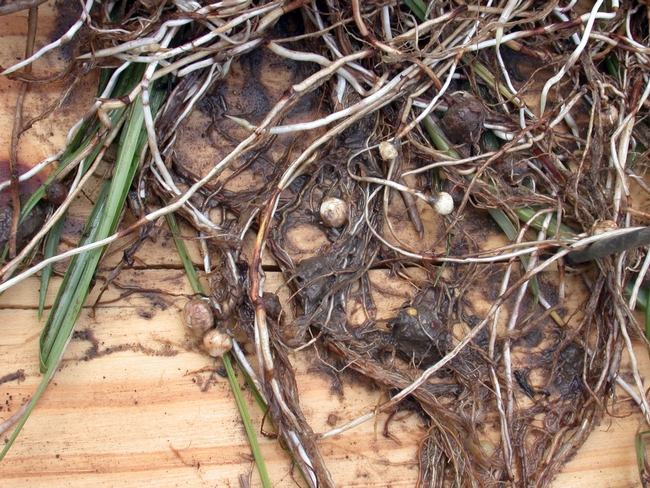Yellow nutsedge found a good home in warmer areas of California and purple nutsedge is sometimes present as well. In bare-ground soils the depth of roots and tubers varies from few inches to two feet, but we wanted to know how does yellow nutsedge grow and produce tubers in beds covered with plastic mulch. Plasticulture in increasingly common and almost all strawberries, fresh market peppers, tomatoes and some other crops on the coast are grown on mulched beds. In previous studies we have identified barriers that are dense enough to resist sharp tips of nutsedge shoots and are either water resistant or protected from wetness with low density mulch. The barriers were more economical than hand-weeding, gave nearly 100% control of nutsedge season-long and prevented new tuber production. These results and performance of steam and herbicides are described at: http://ucanr.org/sites/ucceventura/files/29427.swf. However, we wanted to see what the nutsedge is capable of if left uncontrolled in those warm, fertile, fluffy beds.



Excavation of roots and tubers:
- We used the board with equally spaced nails for an acupuncture procedure for nutsedge in a strawberry bed (a similar model was used by yoga gurus from Santa Cruz to evaluate strawberry root distribution).
- The board was nailed to 36 inches deep cross-section of the bed and the monolith was removed with soil and roots intact.
- Soil was gently washed from the board and the roots with tubers remained between the nails.


We found that:
- Strawberry and nutsedge roots compete in the same zone: predominantly near the drip tape that supplies water and nutrients. Nutsedge prevails.
- 90% of the nutsedge roots and 95%+ of tubers were within 12 inches from the surface.
- Per 1 ft of 4 ft-wide bed (4 ft²) the weed produced about 400 tubers. The nutsedge density was about 18 mature (5 + leaves) plants per ft²
This implies that uniform inversion of the top layer of soil to depth greater than 2 ft may burry majority of the tubers. Just have to remember not to bring them back for three years.
